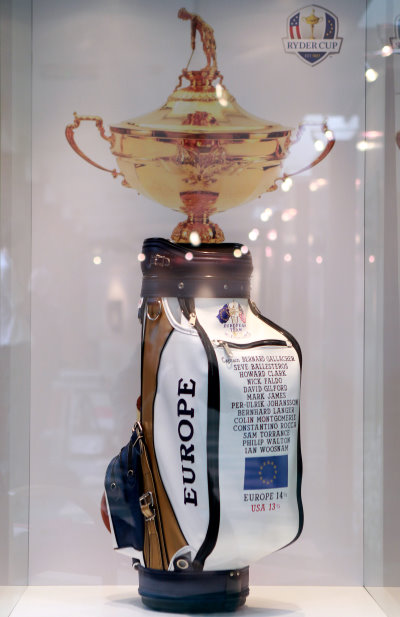
As the excitement builds for the impending Ryder Cup at Gleneagles later this year, golf fans will have a unique opportunity to delve into the history of one of sport’s greatest events during a special exhibition in Stirling.
The Ryder Cup Heritage Exhibition tells the story of golf’s most famous tournament and it takes pride of place at Stirling Smith Art Gallery and Museum from Friday, January 17 until the end of March before moving to the Perth Museum and Art Gallery in June and ultimately Gleneagles.
A series of fascinating items and memorabilia will be on display, charting the iconic golf event from its earliest beginnings as a friendly match between British and American PGA professionals at Gleneagles in 1921 through to the present day where its position as a global attraction was cemented in the Miracle at Medinah in Chicago.
A civic reception, hosted by Stirling’s Provost Mike Robbins will officially open the exhibition on the evening of Thursday, January 16, with the Ryder Cup trophy also present to celebrate the launch.
The exhibition features personal items from past players as well as rarely seen photographs while a series of specially created display cases and graphic story boards recount the history of the matches, covering its growth from a friendly competition to one of the biggest sporting events in the world.
PGA chief executive Sandy Jones, who will be speaking at the civic reception, said: “The Ryder Cup has a rich history and also a long association with Scotland stretching all the way back to 1921 when the first international match was staged between Great Britain and the United States, and which was to be a precursor to what became the Ryder Cup.
“No-one could have predicted then what the Ryder Cup would go on to become as a worldwide sporting attraction but it is fascinating to trace that development through this exhibition and I hope Scottish golf fans and enthusiasts will find it enjoyable.”
Richard Hills, European Ryder Cup Director, added: “The Ryder Cup embodies all that is good about the spirit of the game of golf and this exhibition is the perfect way to illustrate how the heritage of the event has been embraced within the modern day competition – I am sure that visitors to the exhibition will enjoy learning about the history of this great occasion as we build towards Gleneagles.
“At the same time, I am confident that everyone will rejoice in the fact that this – the 40th staging of The Ryder Cup – will leave behind it its own legacy across Scotland through the work done by the Clubgolf programme in addition to the Ryder Cup Educational Resource – both in the on-line school curriculum and through the bursary scheme for secondary education.”
David Wright, the PGA’s heritage curator, has painstakingly accumulated memorabilia over the past two decades, and believes the exhibition has a broad appeal, commenting: “With the exhibition we are trying to reach out to the local community to show how the matches evolved and how the contest developed over the decades ahead of its return to Scotland at Gleneagles in September.”
“We are also hoping to get local school children involved as it will be an opportunity for them to come along and understand what the Ryder Cup means.”
Stirling’s Provost Mike Robbins said he is delighted that the exhibition is on display in the city. “I’m proud that Stirling is playing host to such a unique exhibition ahead of what promises to be an exciting competition later this year.
“Visitors have the opportunity to discover the story of the Ryder Cup, view precious memorabilia and learn about one of the greatest golfing tournaments in the world. I’m thrilled that Stirling is part of this by giving the exhibition a home in the SmithMuseum. I would encourage fans and non-players to visit and revel in golfing history.”
The Smith opening times are: Tuesday – Saturday, 10.30am – 5.00pm & Sunday 2.00pm – 5.00pm, closed on Monday and the exhibition will be open until Thursday, March 20.
Visit www.PGA.info for the latest PGA News and tournament information
Ryder Cup www.RyderCup.com

